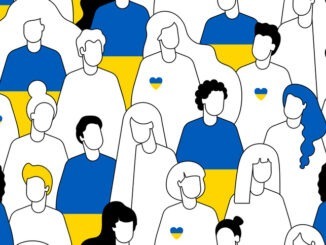
How can leaders differentiate between reward and recognition in the workplace?
CREDIT: This is an edited version of an article that originally appeared on SpriggHR
In order for your employees to feel fully-satisfied in their jobs they will need much more than just a pay check. While offering competitive pay is critical to recruiting the top talent in your industry, it is important to have a programme that covers both rewards and recognition if you wish to attract and actually retain high performance employees.
However, many professionals fall into the trap of assuming these two terms are interchangeable. In order to get the best results from your organisation’s employee reward and recognition programme, it is important to first de-couple these two terms and identify their key distinctions.
Creating an employee reward and recognition programme
The first step to creating an employee reward and recognition programme is to understand just how the distinctions between ‘reward’ and ‘recognition’ will interact when put into action.
Tangible vs. Intangible – an individual can be recognised without being given a reward, but a reward should never be doled out without being coupled with recognition.
Transactional vs. Relational – rewards are useful for attracting top talent to your organisation, and recognition is mandatory for retaining that talent.
Consumed vs. Experienced – carefully balancing how often you reward vs. recognise an employee ensures that the way in which the employee receives compensation for their achievements is appropriate and measured.
Transferrable vs. non-transferrable – aiming to focus on recognition, and teaming it with reward where appropriate, will help your employees feel valued for their individual contributions.
Conditional vs. Unconditional – blending rigidity in rewards with the flexibility of recognition, and applying them either on their own or in combination over time, at your discretion, is critical.
Expected vs. Unexpected – an individual should never be let down by being deprived of a well-earned reward, but you should also be spontaneous enough in your attitude to be able to celebrate and appreciate your employees each day.
Economical vs. Emotional – performance, and fixed outcomes of success, are important in keeping employees motivated, but it is feelings (that is, satisfaction in being recognised) that rule the retention aspect of the employee experience.
Fixed vs. free-flowing – fixed rewards allow for employees to have a clear picture of the expected behaviours they should be working towards, but a free-flowing culture of recognition will help keep them on their toes, and productive on the everyday level.
Impersonal vs. Personal – the impersonal nature of rewards can be remedied by always combining the dealing out of rewards with personal recognition for the employee.
Here are some of the key best practices you should follow when utilising your programme.
Identify what to recognise
Outline and map out all of the behaviours and actions you will be looking for from your employees and ensure everyone in the organisation has equal opportunities to receive recognition.
Make it timely
To ensure the effectiveness of the reward or recognition you deal out, you need to act immediately when success is identified. Providing recognition, or a simple reward, as soon as you notice behaviour you want to see repeated helps employees pinpoint what exactly you are looking for, and how they can go about receiving recognition themselves.
Do it often
Employees crave recognition, so seeking out small and unique ways to regularly recognise their efforts and achievements keeps them satisfied.
Make it genuine
Don’t stick to e-mail templates or automated responses when your employees are performing well. A sincere thank you, or a personalised recognition coupled with a reward, will go further.
Personalise it
As we have already mentioned, personalising how you go about giving rewards or recognition to your employees is critical. If you are recognising their achievements, praise them in a way you know the employee will be comfortable with. If the employee is shy and uncomfortable with loud, public recognition, be genuinely thankful and demonstrate your appreciation in a one-on-one discussion. If you are giving out a reward, select something that you know will be meaningful or impactful to that specific employee.
Aim for collaboration
Including everyone in your employee recognition and reward programme incentivises them to keep up the good work even when you are not looking. Employees love being recognised, but they also enjoy recognising the work of their peers. Encourage your team to praise one another often, and consider implementing a peer-nomination system in your rewards programme.
Make it a habit
Setting yourself a standard of regular recognition means it is much more likely to get ingrained into the organisational culture as a whole, and will transform into something every employee wants to be a part of.
Be transparent
Doling out recognition and rewards is a great tool for demonstrating the type of behaviours you want all employees to exhibit.
Be fair
Don’t just reward the same rotating roster of your top performers. Keep an eye out for the underdogs of your team, whose work is of high quality but may not be quite as obvious. In addition, never create organisation rewards that are only achievable by a certain group of employees, or certain departments.
Include remote workers
Your employees working remotely are just as important as your face-to-face team members, but they can often feel disconnected from the workplace. Providing recognition and rewards to them as often as you do your in-person employees, and encouraging employees to engage in recognition with their remote peers, helps to keep them engaged with the wider team.
Be creative
Your rewards and recognition programme does not have to be boring and dry – have fun with your ideas, finding ways to recognise and reward different groups, departments and employees in unique ways that apply to their specific accomplishments, wants and needs.
Separate recognition and criticism
Constructive criticism is essential but, when it comes to your reward and recognition programme, avoid the ‘compliment sandwich’. Do not leverage recognition just to soften the blow of harsher criticisms. Feedback is integral, but you should have those discussions separately from your recognition process.
The term ‘rewards and recognition’ are often used interchangeably by professionals, but recognising their key differences is one of the most important steps to ensuring your employee programme keeps your employees feeling satisfied and engaged with their work.
You do not need to be excessive with rewards to keep your employees feeling appreciated. Giving meaningful recognition, and coupling this with tangible, earned rewards, where appropriate, ensures that your employees will feel their individual contributions will never go unnoticed by you.


Be the first to comment